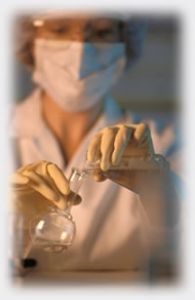- Monday - Friday8:00 AM - 5:00 PM
- Contact Us1-573-785-8478

Unsure if the baby is yours/his?
Consider free DNA tests.*
If you are unsure of the paternity of the baby, you have options:
If you are interested in free genetic tests, you can call your nearest FSD office; telephone numbers and more information can be found at www.dss.mo.gov/cse.
When seeking free genetic testing to confirm who is the father of the child, you will be required to:
The genetic test involves use of a buccal swab to collect your specimen. The buccal swab is similar to a Q-tip, and it is rubbed up and down on the inside of the cheek of your mouth. The swab collects loose cheek cells that carry your genetic “code,” known as DNA.
Once the genetic test results are provided to you, you may sign an affidavit to acknowledge paternity – that is, put Dad’s name on the child’s birth certificate. FSD can also assist, if necessary, with a paternity-only order or with a paternity and child support order.
* “It COST me for those tests!” – You might hear a man say that, but the only time a parent would be charged for FSD-initiated genetic tests is if he failed to cooperate and did not voluntarily submit to the tests. If an attorney for FSD becomes involved and the man is court ordered to submit to the tests, he will most likely be ordered to reimburse the state for the cost of the tests.
(This document was created 8-9-2010 for distribution to inquiring unwed parents and possible fathers. If you have further questions about genetic testing and/or the paternity establishment process, please feel free to contact your local FSD office; telephone numbers and more information can be found at www.dss.mo.gov/cse .)
Please see below for frequently asked questions about paternity testing.
(Paternity Testing Corporation, FSD’s provider of genetic testing, provides the following information. More information can be found at their website: www.ptclabs.com)
Why does mom need to be tested? (Since we already know she is the mother.) Children receive half of their DNA from their mother and half from their father. By comparing the mother and child’s DNA we can tell which parts of the child’s DNA came from the mother, because they match exactly. This lets us know that the remaining part of the child’s DNA came from the biological father – so we know what to compare to the tested man.
We live in different cities. Do we all have to be tested at the same place? There is no need for everyone to be in the same city in order to be tested. We can have the specimens collected anywhere in the country (and most places in the world). For example, mother and child can provide genetic samples in St. Joseph and the possible father provide his sample in Chicago. All 3 specimens will be shipped to our laboratory overnight and the test will begin once we receive all specimens.
We are not giving our specimens at the same time. How do I know the right person was tested? A photograph is taken of everyone tested. A right thumbprint is also taken on the tested adults. Occasionally an “imposter” will come in for a test. Most often when this occurs the alleged father sends a friend in to have his specimen taken. When this happens the mother can look at the photograph and tell us that the man tested was not the alleged father.
Isn’t blood better than cheek swabs? No, your DNA is the same throughout your body. As a result, the source of the DNA sample does not affect the accuracy of a DNA paternity test. Before DNA testing it was necessary to use blood in order to have a paternity test. It was also necessary to wait until a child was 6 months old. Those types of tests were HLA and red cell antigen tests. Since DNA testing began to be used for paternity in the early 1990s, the older type of blood tests has become less common. DNA testing is not limited to blood samples. The source of your DNA doesn’t matter. The DNA from your cheek cells is exactly the same as the DNA from your blood. The accuracy of a paternity test is exactly the same, whether the laboratory tests blood or cheek cells from swabs. The reliability of a DNA test is not based on the type of specimen used, but on the type and amount of DNA testing performed by the laboratory.
I have black hair and brown eyes. How can I have a baby with blonde hair and blue eyes? Physical traits like specific hair and eye color can be either dominant or recessive. For example, your mother may have given you DNA that would result in blue eyes, but your father may have given you DNA that would result in brown eyes. Brown eyes are dominant over blue eyes, and therefore your eyes are brown. You still have the DNA for blue eyes that your mother gave you, and that is just as likely to be passed along to your child as the DNA for brown eyes that your father gave you. The same is true for hair color and other physical traits.
Website Designed by Creative Design Group | Smart Marketing | Login | Forms Login | Email Login